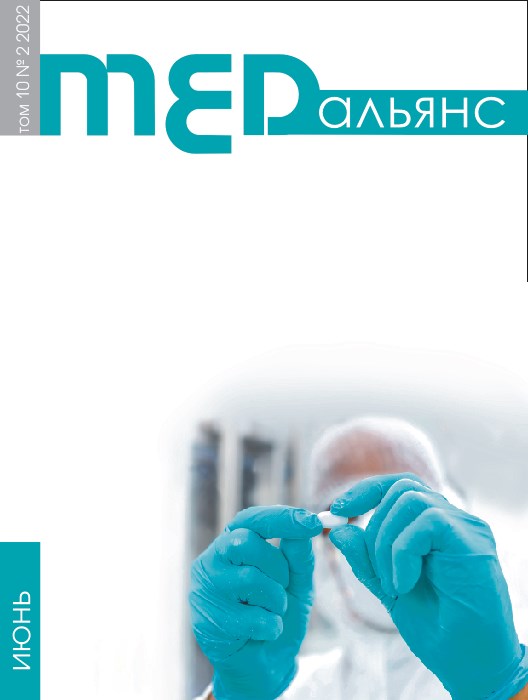Abstract
The relevance of the problem of managing patients with concomitant infectious and noninfectious pathology is beyond doubt, a third of patients suffering from tuberculosis have COPD as a comorbidity, which requires adequate therapy to improve the prognosis of the patient’s treatment as a whole. Objective: to evaluate the
effectiveness of various options for bronchodilatory and anti-inflammatory therapy in patients with newly diagnosed pulmonary tuberculosis secondary to COPD. Materials and methods. A simple prospective comparative study included 210 patients divided into 3 groups: 124 pa- tients with TB+COPD; 46 patients with drug-susceptible TB (TB DS)+COPD; 40 patients with multidrug-resistant TB+COPD. The selection of treatment regimens was carried out with an assessment of the best efficiency, including inhaled glucocorticosteroid in combination with a long-acting ?2-adrenergic agonist (IGCS/LABA) into the treatment regimens in the intensive phase of the course of TB. Duration of the follow-up is 6–9 months with assessment of X-ray pattern, bacterial shedding and smear neg- ativity as criteria for curing TB. Results. In patients with TB+COPD, the best effect of minimizing the severity of broncho-obstructive syndrome (reduction of dyspnea according to mMRC and CAT test) was obtained during ther- apy with a combination drug (long-acting anticholinergic drug and long-acting ?2-agonist (LAAC/LABA) with good tolerance. In patients with TB DS+COPD, positive dynam- ics in the reduction of the severity of cough, dyspnea, CAT test was obtained in the ICS group in comparison with patients taking short-acting anticholinergic drugs (SDA).
For patients with MDR+TB COPD, ICS/LABA showed the optimal effect on the severity of COPD symptoms. Against the background of taking IGCS/LABA in both groups, there was an increase in the number of patients achieving smear negativity, cessation of bacterial shedding and closure of decay cavities, in comparison with the CAAC group, without any side effects. Conclusion. Adequate correction of broncho-obstructive syndrome in patients with COPD, including the use of bronchodilators (LABA) and anti-inflammatory drugs (IGCS) in the intensive phase of treatment of newly diagnosed pulmonary TB due to the main and additional effects of drugs, can improve the effectiveness of tuberculosis therapy.

